A Sea of Humanity: The Overwhelming Crowds of Woodstock
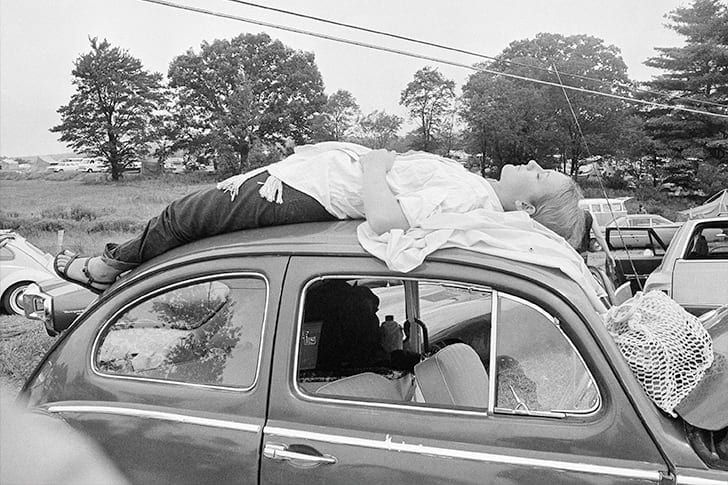
Imagine the largest crowd you've ever seen and multiply it—that was Woodstock. What was expected to be a gathering of 50,000 ended up being an astounding 400,000! The festival wasn’t just sold out; it burst at the seams. Highways became parking lots as cars were abandoned due to traffic. Fields transformed into makeshift tent cities.
The sheer number was a testament to the era's energy and the hunger for change. A fact many don't know? The organizers were so overwhelmed that they made the event free! In that sea of humanity, strangers became family, all swaying to the same rhythm and beat.
Strumming Freedom: Jimi Hendrix's Woodstock Legacy
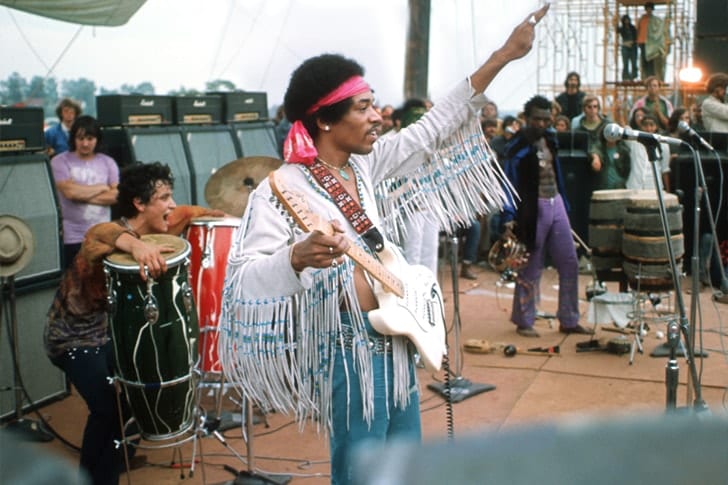
Among the most iconic moments of Woodstock was Jimi Hendrix's mesmerizing performance. A photograph capturing him on stage, lost in his artistry, symbolizes the innovative and free spirit of the festival. Hendrix's rendition of "The Star-Spangled Banner" became a defining sound of the era, intertwining traditional symbolism with the Vietnam War's raw emotions.
The fact that Jimi was the highest-paid performer at Woodstock, receiving $18K (equivalent to about $125K today), showcases the significance of his presence. However, the music transcended money, and his performance remains etched in history as a captivating expression of an entire generation's hopes and dreams.
The Sunrise Serenade: Hendrix's Lonely Finale
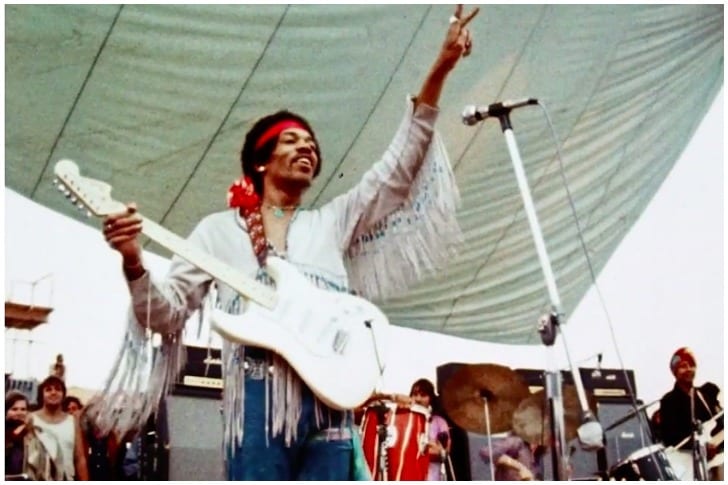
As the sun rose on the final day of Woodstock, a musical legend, Jimi Hendrix, took the stage. But only one-third of the original crowd remained to witness his electrifying performance. The reason? Jimi's set was rescheduled to the early morning hours, causing many festival-goers to miss it.
This did not deter the iconic musician from delivering a powerful rendition of "The Star-Spangled Banner." The performance became iconic in the 1960s, symbolizing both rebellion and unity. Despite the thinning crowd, Jimi's set remains one of the most memorable moments in rock history and continues to inspire musicians worldwide to date.
Woodstock's Influence on Festivals
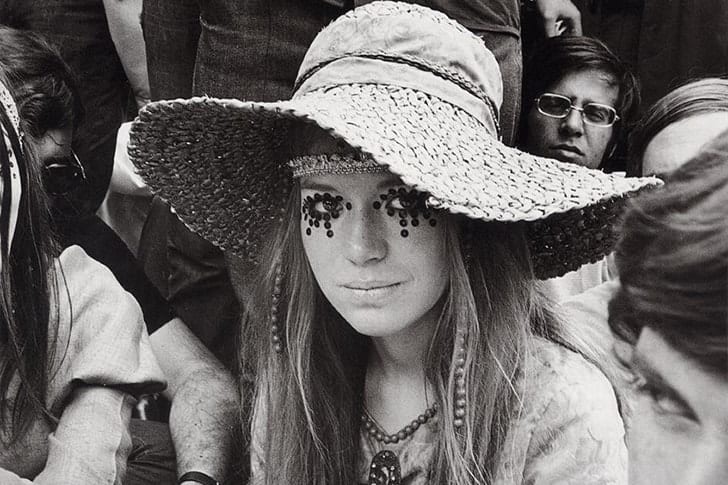
Woodstock wasn't just a festival; it was the blueprint for modern music gatherings. The scene captures a melting pot of creativity, free expression, and unity that set the standard for festivals to come. Woodstock's practices are now seen at festivals worldwide, from communal living spaces to the incorporation of art installations.
An intriguing fact is that despite hosting nearly half a million people, the event was initially intended to be a ticketed concert but became a free festival due to the overwhelming attendance. This unexpected shift encapsulates the spirit of Woodstock, a revolutionary event that unintentionally defined how we celebrate music en masse today.
Rain-soaked Resilience
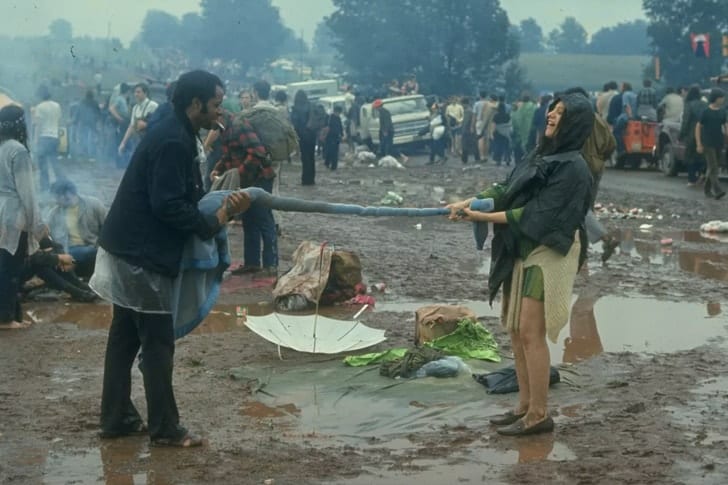
As the rain poured down on the already chaotic Woodstock Festival, two souls struggled against nature's whims. In this interesting image, their determination shines through as they salvage their belongings from the encroaching mud. Woodstock's legendary status wasn't built solely on its musical lineup; it was also shaped by the resilience of attendees facing unexpected challenges.
The festival, originally intended to be a profit-making venture, transformed into a free-spirited haven of shared experiences. The rain-soaked scene captures the spirit of adaptability and unity that became synonymous with Woodstock. Amidst the mud and mess, these individuals epitomized the festival's ethos of making the best out of any situation.
Woodstock's Timeless Fashion Influence
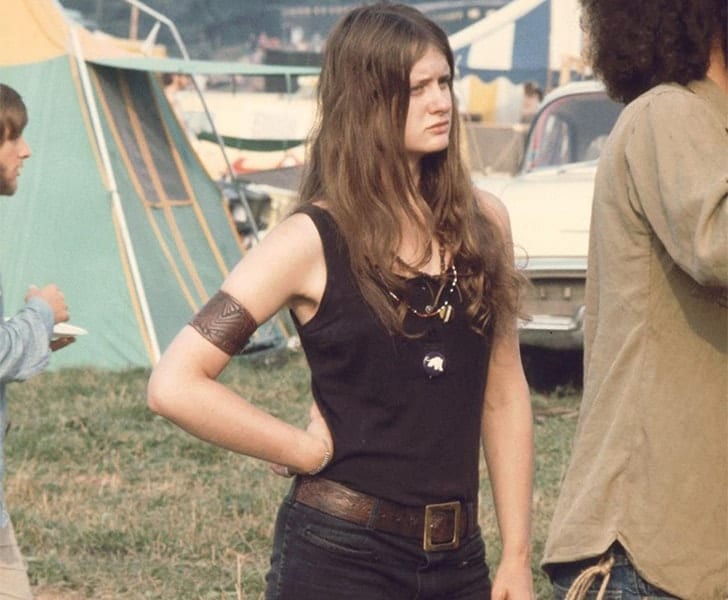
In this iconic Woodstock snapshot, a girl effortlessly becomes a fashion icon, showcasing a style that transcends generations. Her ensemble, comprising a black tank top, a leather armband, a cowboy belt, and artisanal necklaces, captures the essence of a free-spirited era. Little did she know that her fashion choices would resonate over time, influencing young men and women and professional designers and clothing brands.
Woodstock's spirit of non-conformity and self-expression lives on in every detail of her attire, inspiring those who seek to blend vintage flair with contemporary sensibilities. These vintage pictures remind us that fashion isn't just about clothes; it's about capturing the zeitgeist.
The Irresistible Call of Woodstock
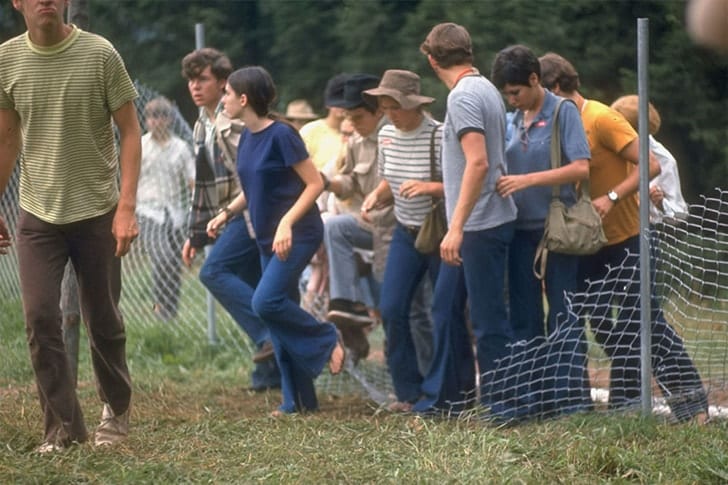
Woodstock wasn't just a festival but a cultural phenomenon that beckoned a generation to defy convention. With less than 100,000 tickets sold but nearly half a million attendees, the event's allure was undeniable. Many young people felt drawn to the event in an era marked by rebellion and a quest for shared experiences.
The concept of simply showing up without a ticket perfectly encapsulated the spirit of the times. Woodstock became a gathering where counterculture converged, transcending age, race, and socio-economic status barriers. This historical photo embodies the collective yearning for a new way of living, breathing life into the phrase "peace and love."
Woodstock's Messy Morning After
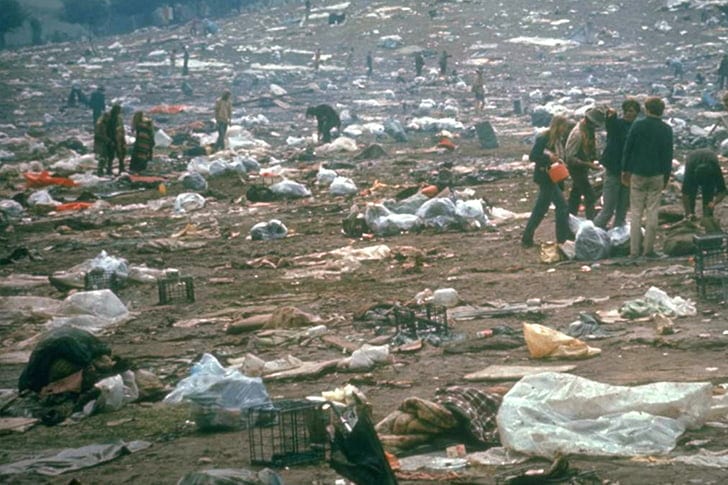
The morning after Woodstock brought a reality check to the iconic festival's utopian ideals. Like a party host after a wild night, Max Yasgur surveyed his Bethel dairy farm, now marred by piles of trash left by the revelers. The contrast between the festival's message of peace and love and the sight of littered grounds was stark.
The image of a once-thriving farm now littered and unkempt is a sobering reminder of the challenges faced after the euphoria subsided. Max's decision not to host a second edition reflects the toll such a massive gathering took on the environment and local community.
Unfavorable Conditions
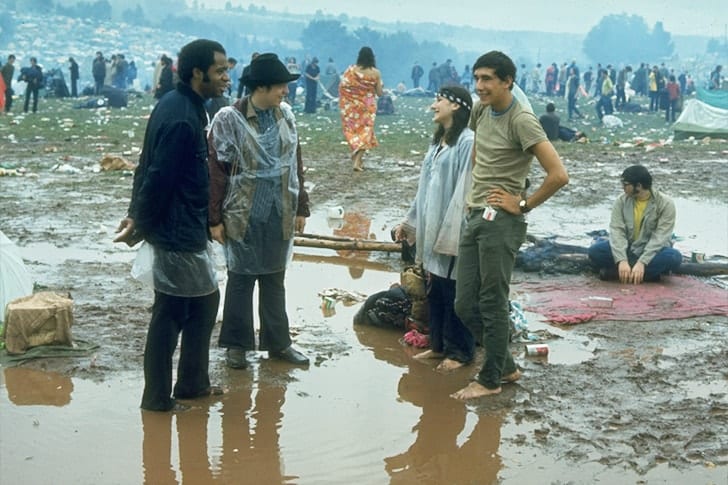
Woodstock showcased the remarkable ability of its attendees to find joy in the face of adverse conditions. In this poignant snapshot, individuals revel in the celebration of peace and love despite the challenges surrounding them. The lack of preparation for the enormous crowd, compounded by relentless rain, led to deplorable conditions. The festival's meager sanitary resources were stretched thin, but the communal spirit of Woodstock persisted.
This image is a reminder of the human capacity to endure discomfort for the sake of shared ideals. This demonstrates that even when circumstances are far from ideal, the pursuit of something greater can inspire a resilient, hopeful, and celebratory spirit.
Monkeying Around at Woodstock
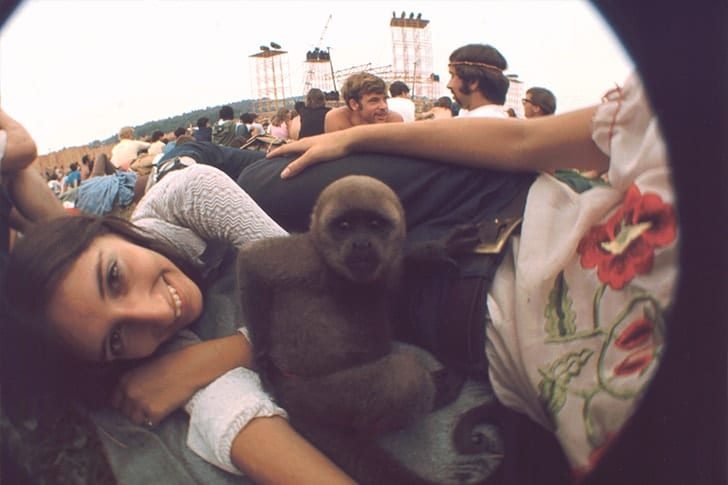
In a festival renowned for its unexpected moments, the sight of a young girl with her pet monkey dancing to the music stands out. No, it wasn't an LSD-induced vision but a real-life rock-loving chimp amidst the crowd. While the identity and backstory of this mysterious duo remain cloaked in history, their captured moment has immortalized them.
When the photo surfaced online, the internet exploded with intrigue, turning them into a viral sensation on platforms like 9Gag. Jokingly, a Reddit user expressed envy, wishing to trade places with the monkey. And who could blame them? This primate experienced what many dream of—soaking in the magic of Woodstock 1969.
Bethel's Bittersweet Weekend: Missed Moments at Woodstock
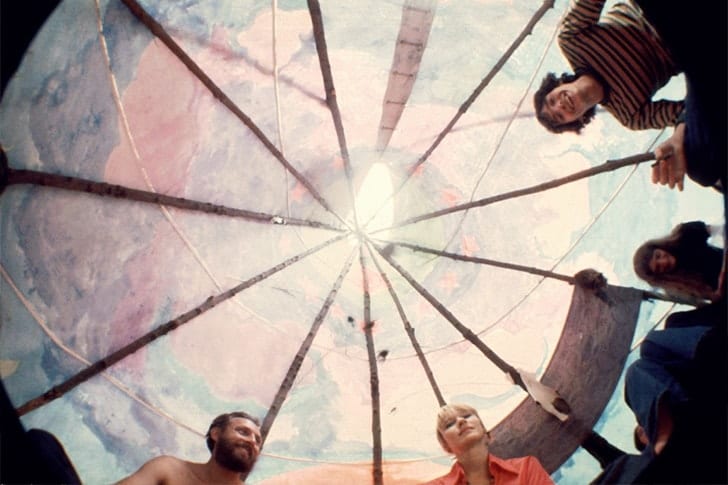
The idyllic scene at Bethel in 1969 painted a picture of unity and harmony, with iconic musicians and the spirit of peace pervading the atmosphere. Yet, amid the music and camaraderie, notable absences cast a bittersweet shadow over the event.
John Lennon, an emblem of the counter-culture movement, was denied a visa and remained stranded in Canada, unable to lend his voice to the Woodstock stage. Bob Dylan, a pivotal figure in folk and rock, had to prioritize his ailing son over the festival. And The Jeff Beck Group, slated to perform, disbanded the night before their scheduled appearance, leaving a void in the lineup.
The 48-Hour Crescendo
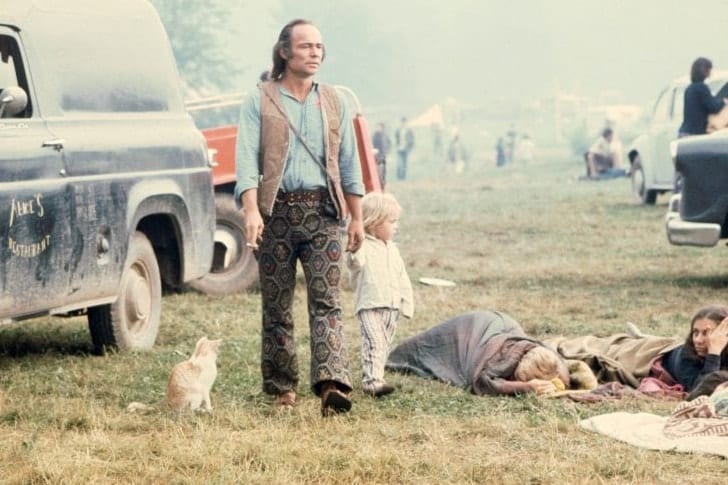
Woodstock's 48-hour musical marathon created an unprecedented rhythm of unity and freedom. The music flowed ceaselessly for nearly the entire event except for a brief two-hour hiatus. Yet, even during this interlude, the spirit of Woodstock remained undiminished. The beat of celebration, fueled by the energy of thousands, persisted.
People danced, shared stories, and formed connections that transcended the boundaries of age, race, and background. The festival's ethos of peace and love continued to reverberate, echoing the resilience and joy of a generation united by their passion for music and their desire for change. The music might have paused, but the soul of Woodstock soared higher than ever..
Forever in Our Hearts
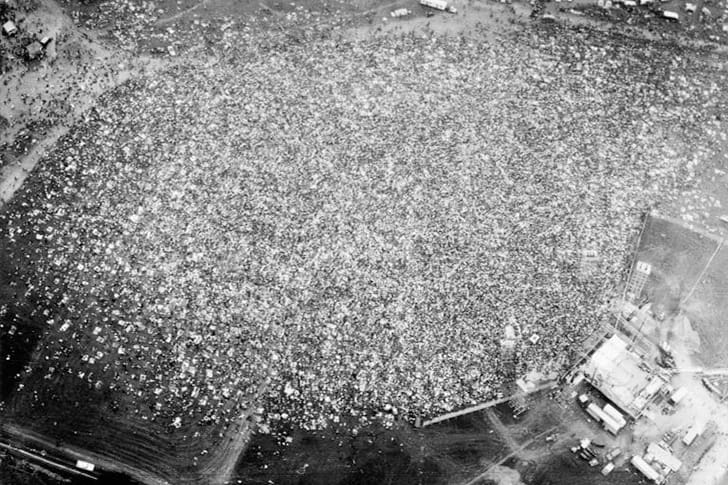
Woodstock, like an intricate mosaic, evokes diverse viewpoints. For skeptics, it's a symbol of a generation adrift in hedonism, critiqued for its perceived lack of societal contribution. Yet, to dreamers, it's a towering emblem of the 1960s counter-culture, a vibrant tribute to the ideals of peace and love that the "flower power" movement championed.
Within this paradox lies the festival's enduring resonance. The festival's legacy speaks to the complexities of an era where rebellion and idealism coexisted. As time unveils new layers, it's evident that Woodstock was more than a fleeting spectacle; it became a microcosm of a transformative epoch.
Hitchhiking Adventure to Woodstock Dreams
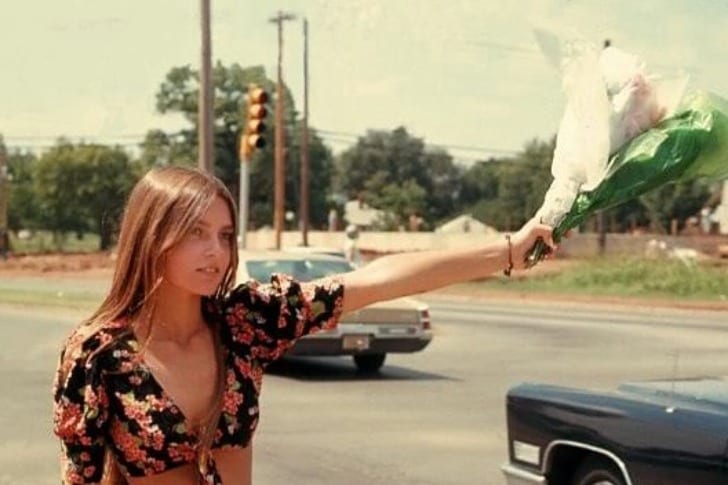
Dressed in the quintessential hippie fashion of the era, this young woman radiates the vibrant energy that defined Woodstock. With her flower-adorned dress and carefree spirit, she symbolizes the counterculture movement's desire for freedom and self-expression.
Unable to secure transportation to the festival, she embraces the adventurous spirit of the time by hitchhiking. Her determination reflects countless attendees' shared journey on unconventional paths to reach the festival grounds. Woodstock wasn't just a destination; it was a pilgrimage for those seeking a harmonious existence. This image captures the essence of the era's ethos, where the journey was as significant as the destination.
Blooms of Expression
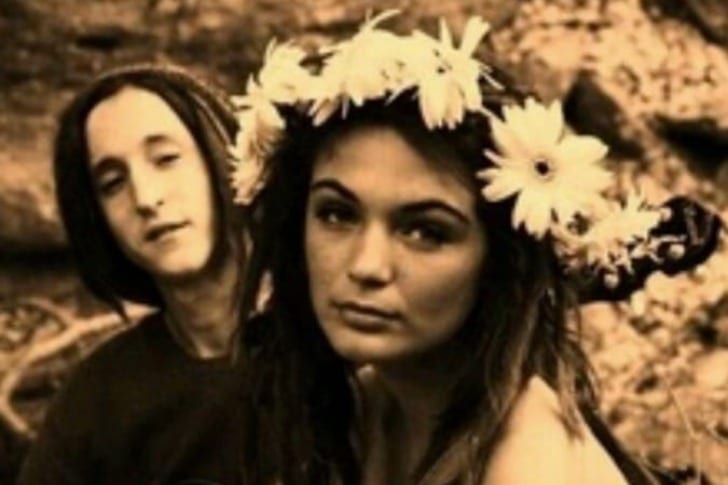
Woodstock wasn't just a celebration of music but a canvas for self-expression and individuality. The young woman in the picture embodies this spirit with her captivating flower headband, a symbol of peace and nature, contrasting against her edgy dreadlocks and piercing dark eyes. Her ensemble captures the eclectic fashion choices that adorned the festival grounds.
The attendees saw clothing as more than fabric—it was a way to communicate identity and beliefs. This captivating snapshot freezes a moment in time, showcasing a soul unafraid to embrace both the delicate and the wild. Each outfit was a brushstroke on the vivid tapestry of Woodstock.
The Grateful Dead's Electrifying Voyage
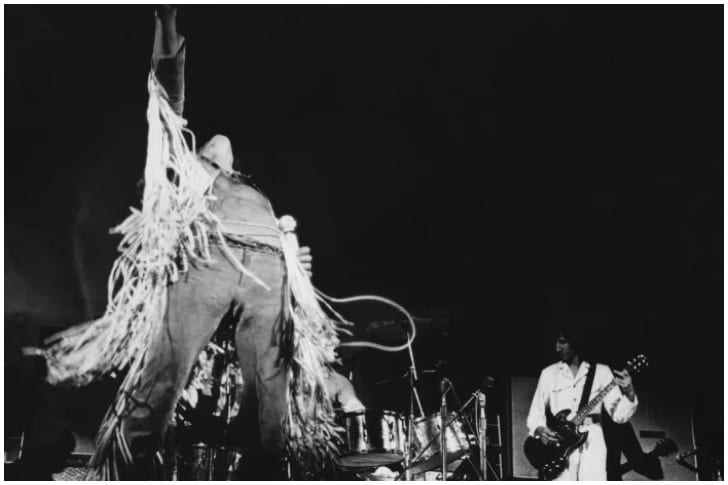
The Grateful Dead's performance at Woodstock was nothing short of electrifying—both metaphorically and literally. As the band took the stage in the middle of the night, their music flowed like a cosmic current, connecting with the mesmerized crowd.
Their psychedelic rock jams were accompanied by a visually stunning light show that danced across the night sky, creating an otherworldly atmosphere. What makes this performance legendary is their technical challenge—their equipment and instruments were dampened by the rain, posing a risk of electrocution. But the band's determination prevailed, and they continued to play, defying the odds and solidifying their status as counterculture icons.
Peaceful Protectors: The Please Force of Woodstock
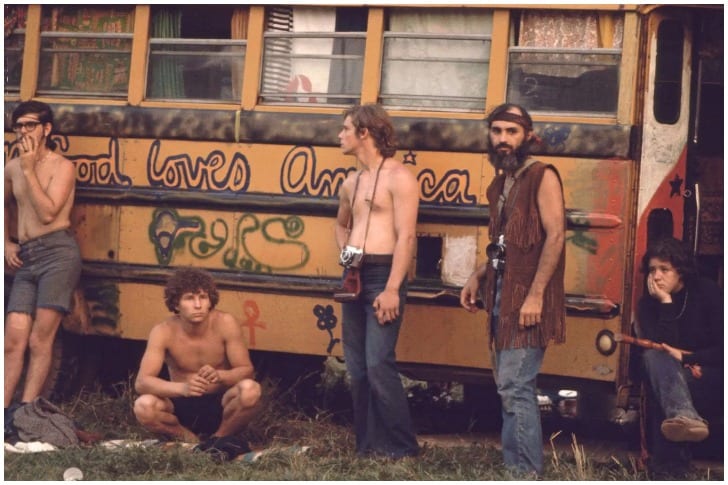
In a striking juxtaposition of name and purpose, the security team at Woodstock was aptly called the "Please Force." Instead of employing traditional authoritative tactics, this unique group embodied the festival's ethos of harmony and cooperation. Clad in colorful attire and often flower-adorned, the Please Force worked to ensure safety and order while maintaining the peaceful atmosphere that defined Woodstock.
Their approach reflected the spirit of the event—a departure from the norm, embracing understanding and empathy over force. The Please Force's role in managing the colossal crowd showcased a novel way of keeping the peace, solidifying the event's reputation as a cultural phenomenon that promoted alternative values of togetherness and respect.
Without a Care in the World
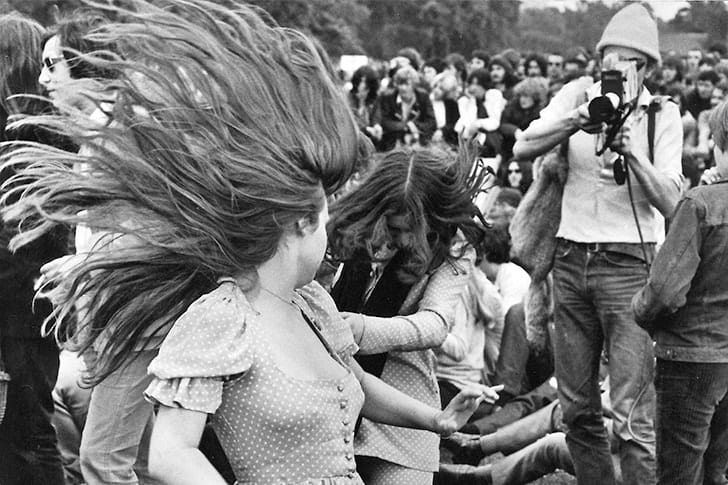
In 1969, the Woodstock festival became a symbol of love, peace, and unity. Amongst the crowd, a couple danced, their polka dot dress and suit mirroring each other, their hair flowing wildly. Lost in the music and each other, they embodied the spirit of a generation.
Good thing a quick photographer caught their moves, immortalizing their joy. More than music or speeches, this scene encapsulated the essence of the iconic festival; the couple's matching attire represented the harmony sought by nearly half a million attendees, making this photo a timeless reminder of a festival that still resonates across generations to date.
A Symbol of Love and Unity

The iconic image of young lovebirds Bobbi Kelly and Nick Ercoline wrapped in a blanket, lost in each other's eyes, encapsulates the spirit of unity and love that defined Woodstock. Struggling to fend off the chill, their embrace became a poignant symbol of the youthful optimism and togetherness that thrived in that mud-soaked field.
This beautiful photograph has since become synonymous with the festival, symbolizing the shared human experience in that unique moment in history. Bobbi and Nick, pictured on the Woodstock album cover, married each other, and their love story remains a touching emblem of this memorably fantastic era.
Three Roads of Woodstock: A Hippie's Guide to Life
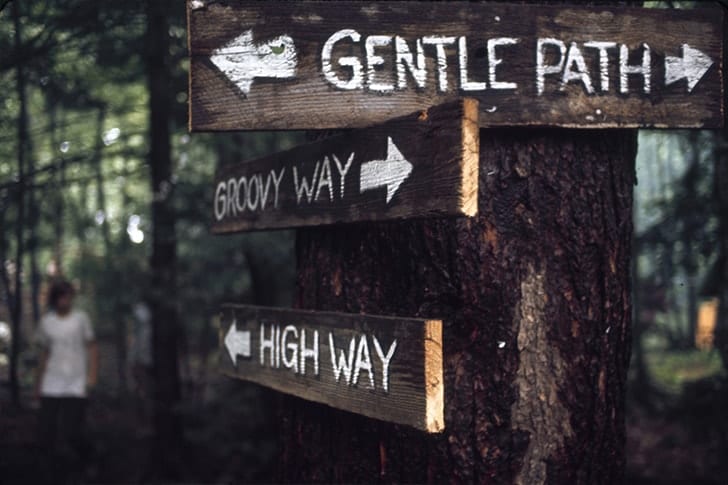
In a scene straight out of a carefree Woodstock memory, three lovingly-crafted signs playfully point the way for festival-goers: 'groovy way,' 'high way,' and 'gentle path.' Beyond their practical purpose, these signs embody the spirited vibe of the era. Whether chasing the musical beat, chasing higher thoughts, or simply seeking a serene escape, attendees followed these quirky guides.
Woodstock wasn't just a concert but an artful tapestry of expression. These signs weren't mere markers; they encapsulated the festival's soul, contributing to its legend as a beacon of peace, love, and mutual understanding. The signs harmonized with the essence of Woodstock, forever resonating with the values of a generation.
A Harmonious Blend: Stars Among the Crowd
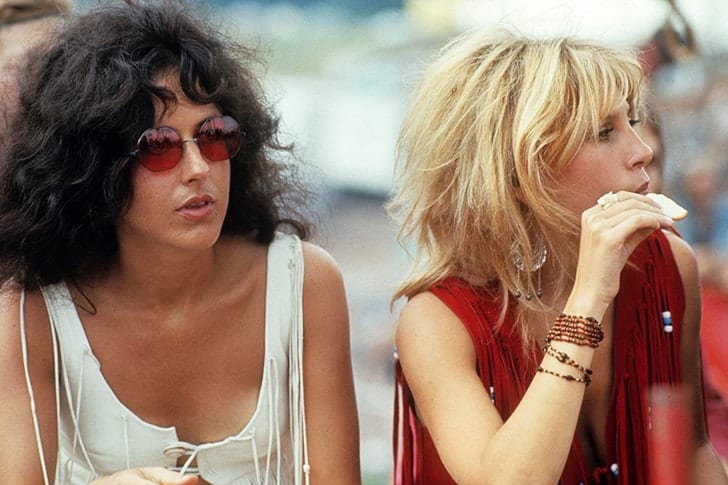
The atmosphere at Woodstock was so enchanting that it blurred the lines between stars and spectators. In a captivating snapshot, Jefferson Airplane's lead singer, Grace Slick, is seen seated on the grass, joined by Sally Mann, wife of the band's drummer, Spencer Dryden.
They're not on stage, but part of the crowd, soaking in the peace and love that defined the festival. This was Woodstock, a place where over 400,000 people gathered for three days in 1969, united by music and a sense of community. It was not just a concert but a cultural phenomenon that epitomized an era.
Tim Hardin's Unforgettable Serenade
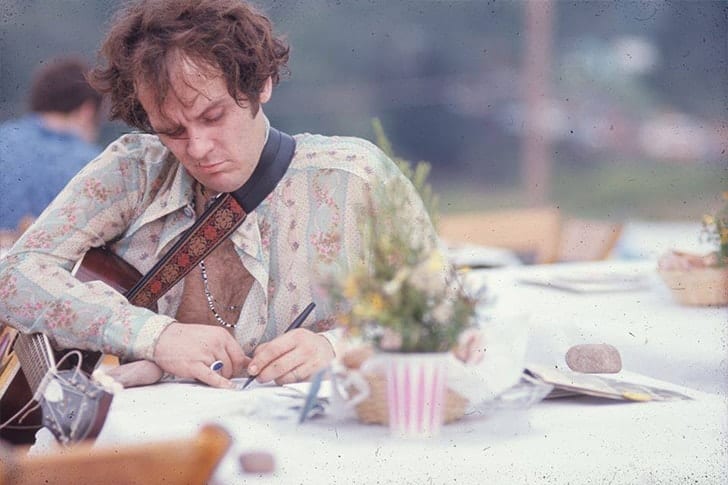
Tim Hardin's performance at Woodstock stands as a testament to the emotional power of music. Though not as widely recognized as some of his contemporaries, Tim's soulful delivery of "If I Were a Carpenter" resonated deeply with the Woodstock crowd. The raw vulnerability in his voice gave life to a song that became an emblem of the 1960s folk movement.
This performance is even more memorable because Tim was so nervous about playing in front of such a large crowd that he reportedly took a dose of heroin to calm his nerves. This poignant fact reflects the complex realities behind Woodstock's idealism.
Bubbles of Peace in a Sea of Change
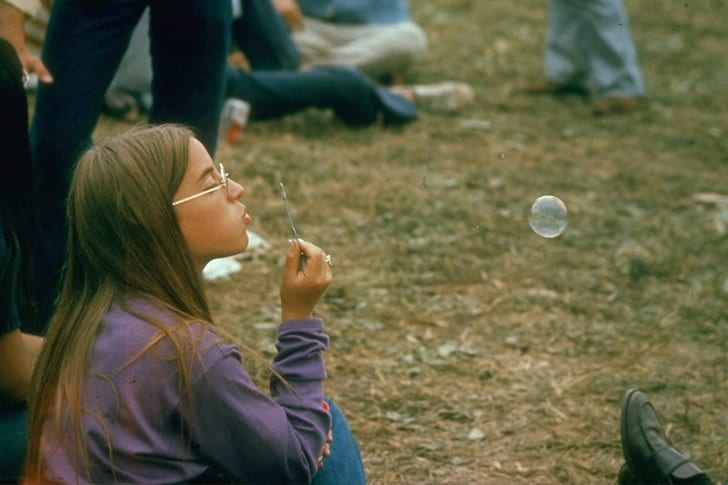
As Woodstock drew nearly half a million dreamers during the iconic summer of 69, the festival became a pivotal chapter in cultural history. The image of Jackie Barg, seated amidst the sprawling grass, gently releasing bubbles into the air, embodies the era's spirit of innocence and rebellion. Amid the sea of fellow attendees, she finds a tranquil moment of contemplation.
Those souls, converging from all corners of America, brought with them music, a longing for change, a desire to challenge norms, and an aspiration for a more harmonious world. Jackie's bubbles, though fleeting, carry the weight of a generation's aspirations.
Woodstock's Spiritual Currents
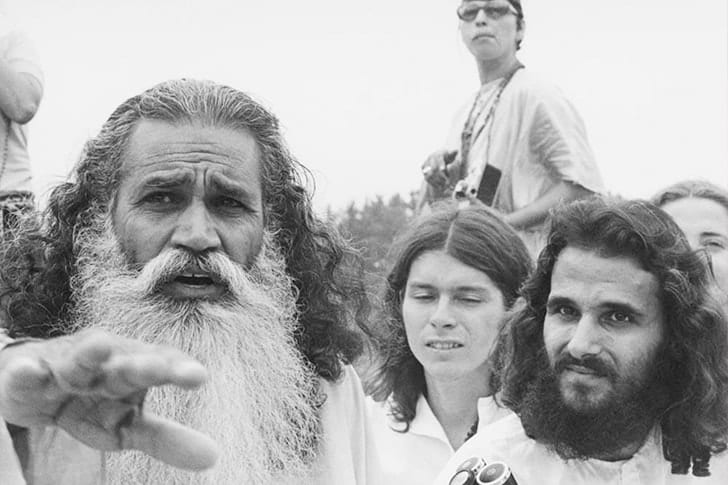
Hippies, often dismissed as shallow, were, in fact, deeply connected to spirituality. Woodstock, a pinnacle of the counterculture movement, exemplified this in the unexpected presence of Satchidananda Saraswati, an Indian spiritual guru. Amidst the sea of rock music, his serene demeanor brought a touch of the divine. Satchidananda's invocation of peace at the opening of the festival underscored the spiritual undercurrent running through the event.
Beyond the surface, Woodstock was a pilgrimage of sorts, where souls sought meaning beyond materialism. The convergence of music, camaraderie, and the spiritual moment marked by Satchidananda's presence challenged stereotypes and showcased the profound yearning for a more interconnected and enlightened world.
Max Yasgur: The Unlikely Hero of Woodstock
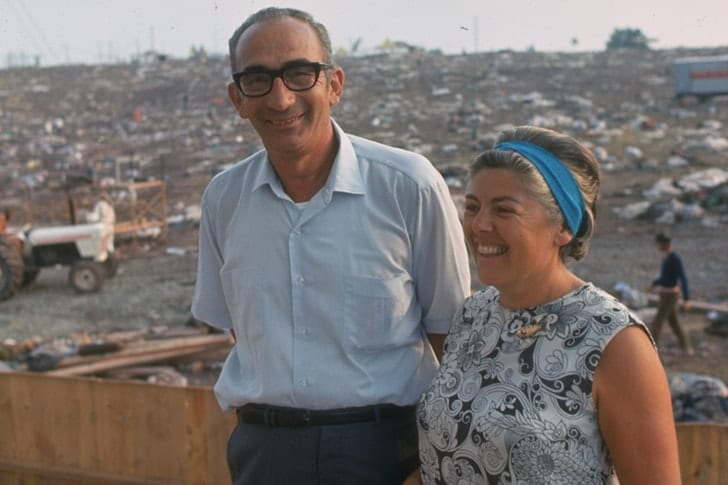
Max Yasgur, an unassuming dairy farmer, forever etched his name in history by opening his land to the Woodstock Festival. This photograph captures him addressing the massive crowd that gathered on his property. His decision to provide his farm for the event showcased the power of individual support for a larger cultural movement.
Despite facing skepticism and backlash from his conservative community, his belief in free expression and the importance of the counterculture prevailed. His role in making Woodstock a reality was pivotal, emphasizing the significance of unlikely heroes in shaping the course of events. Max's courage and open-mindedness transformed his farm into a symbol of peace, love, and unity.
Udderly Unconventional Delights at Woodstock
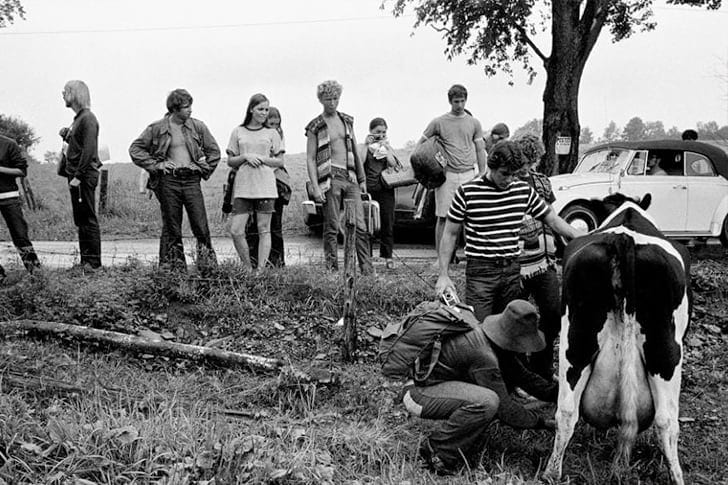
Max Yasgur's dairy farm brought an unexpected twist to the Woodstock experience. Amidst the music and mayhem, a cow takes center stage in this charming snapshot. The farm's bovine inhabitants were a source of intrigue and amusement for festivalgoers, offering a quaint contrast to the rock 'n' roll atmosphere.
Here, a small crowd gathers, transfixed by the sight of young men milking the cow. In an event that aimed to challenge norms and celebrate freedom, this image encapsulates the unique blend of counterculture and rural charm that defined Woodstock. It serves as a reminder that even amid the unconventional, life's simple pleasures—like fresh milk—could create moments of connection and delight.
Jamming Amidst the Jam
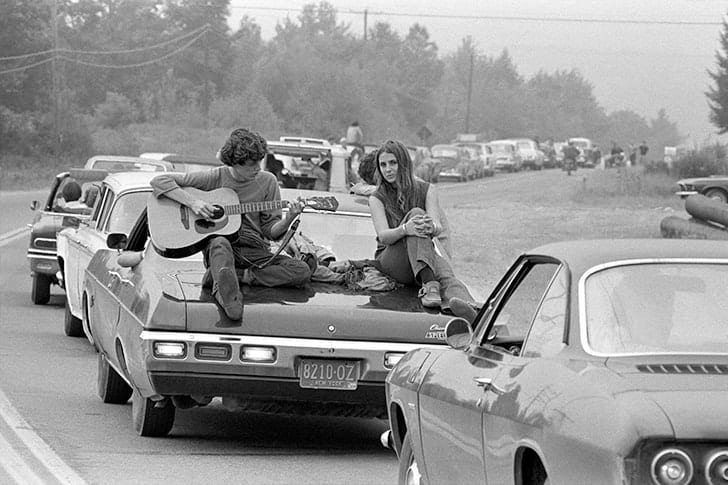
The Woodstock traffic jam, notorious in its own right, inadvertently led to some of the festival's most unforgettable moments. Faced with the gridlock, many chose to abandon their vehicles and embark on an adventure by foot. This candid shot captures a young couple atop a car trunk, turning the inconvenience into an opportunity for connection.
They create a makeshift haven amidst vehicular chaos with an acoustic guitar as their companion. Their carefree demeanor mirrors the festival's spirit of embracing the unexpected and making the best of situations. It wasn't just about the performances but the impromptu moments of music and companionship that sprung up throughout the event.
Unexpected Allies
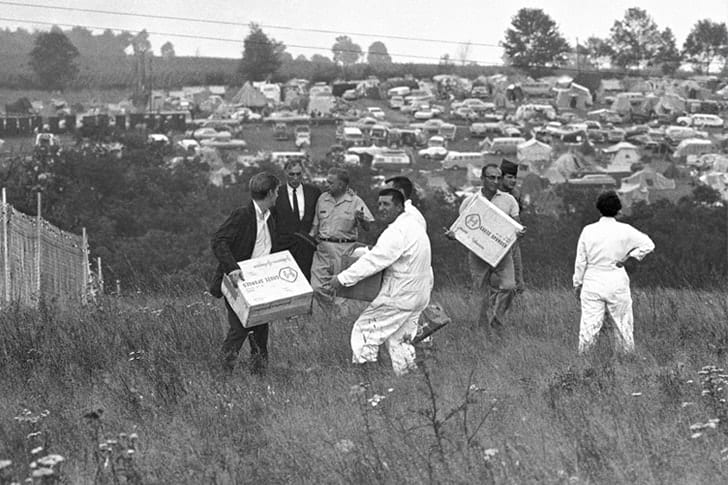
As Woodstock transformed into a muddy wonderland and basic supplies played hide-and-seek, a most unlikely hero strode in: the United States Army. Amidst the swirling chaos and vibes that screamed "anything but establishment," the government had a plot twist up its sleeve. Behold a snapshot etched in history: soldiers dishing out food crates and medical aid.
It's like the clash of two worlds met in a muddy embrace. The scene captures the ultimate mic-drop moment as the establishment, and the free-spirited counterculture locked horns but then decided to share a cup of tea instead. Woodstock was where peace, love, and a good military ration pack redefined unity.
Bethel's Celebration and Concern
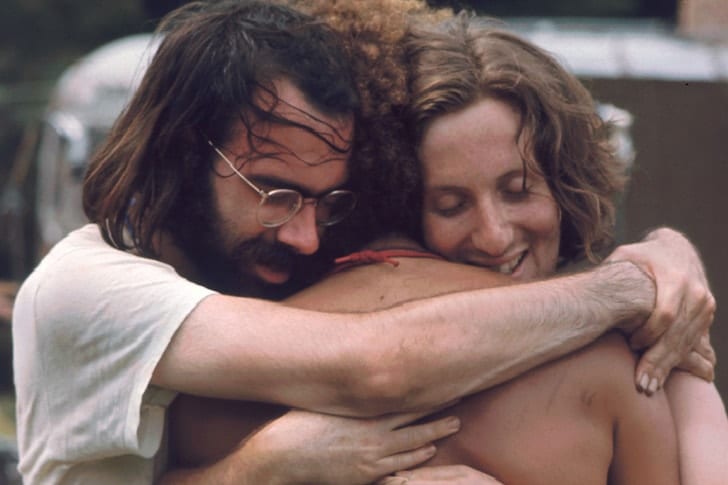
Woodstock, the ultimate symbol of the counterculture movement, painted a dual picture that went beyond the music and mud. Inside, a kaleidoscope of joy, music, and camaraderie transformed Bethel into New York's third-largest city. However, just beyond its borders, a different narrative unfolded. The state's Governor, Nelson Rockefeller, labeled Bethel a disaster zone, juxtaposing officials' alarm with festival-goers' euphoria.
This contrast embodies the essence of significant events: jubilation within and without concern. Amidst the melodies and mud-caked fields, anxious parents clung to phones, their worries harmonizing with the festival's carefree tunes. This captured a moment of cultural revolution and the coexistence of celebration and trepidation.
A Tractor's Comfort in a Sea of People
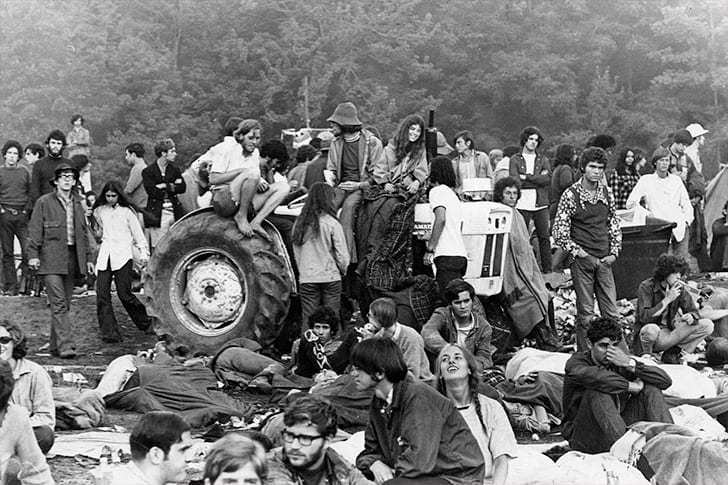
Amongst half a million people gathered at Woodstock, the comforts of home were nowhere to be found—not even a single chair! Yet, this did not dampen the festival's spirit. In a delightful photograph, a lucky few revelers found solace atop a tractor, enjoying what must have felt like luxurious seating.
Their joyous expressions tell a story of contentment and adaptability as they make the most of a unique seating arrangement. Woodstock was all about embracing the unconventional, finding joy in simplicity, and turning ordinary objects into symbols of creativity. The tractor's image embodies the ingenuity and resourcefulness that defined the festival, where ordinary things became extraordinary memories.
When Commerce Clashes with Counterculture
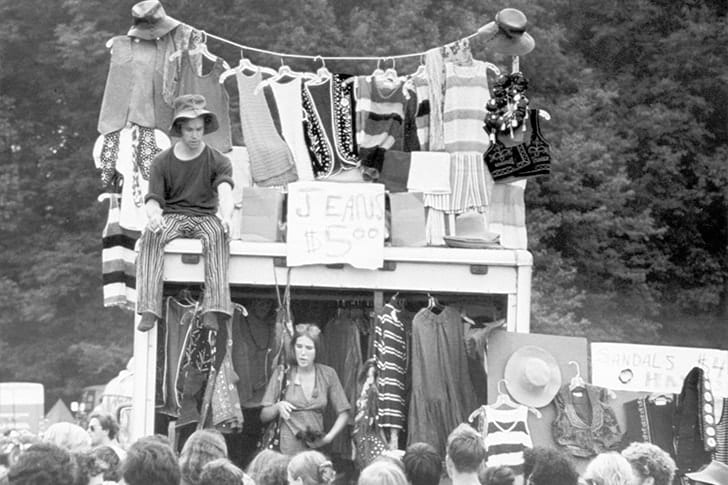
Woodstock was as much about music and camaraderie as it was about a shared ethos of peace, love, and anti-commercialism. When some entrepreneurial spirits sensed a business opportunity amidst the chaos, they decided to make a quick buck. But a particular food stand, raising the price fourfold, saw capitalism meet its countercultural match.
The escalation from a mere price hike to a riot-like response, culminating in the stand's fiery demise, paints a vivid contrast. It raises the question: Wasn't Woodstock about peace and love? In the heat of the moment, ideals clashed, revealing that even the most peace-loving festivals are not immune to the complexities and contradictions of human nature.
From Chaos to Compassion: A Snapshot of Unity
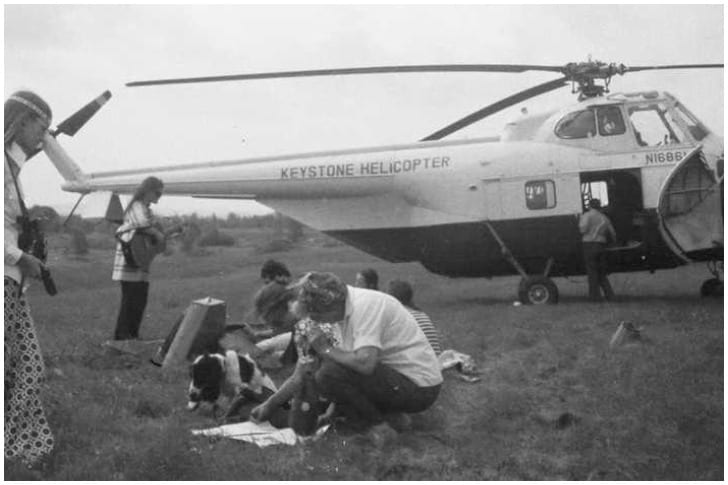
Imagine organizing an event for 100,000, and half a million show up! This unexpected scenario at Woodstock led to a significant shortage of essentials. But amidst the unpredictability emerged an iconic scene of unity. The vast grounds, which might have been an arena of potential tragedy, turned into a shared experience and togetherness spaces.
The picture in question captures a powerful contrast: army officers, in their structured discipline, ticking off their distribution checklist, while nearby, a family with their pet dog relishes the simple joys of milk and bread. It's a poignant reminder that unexpected alliances can emerge during challenging times.
Janis Joplin's Soul-Stirring Performance
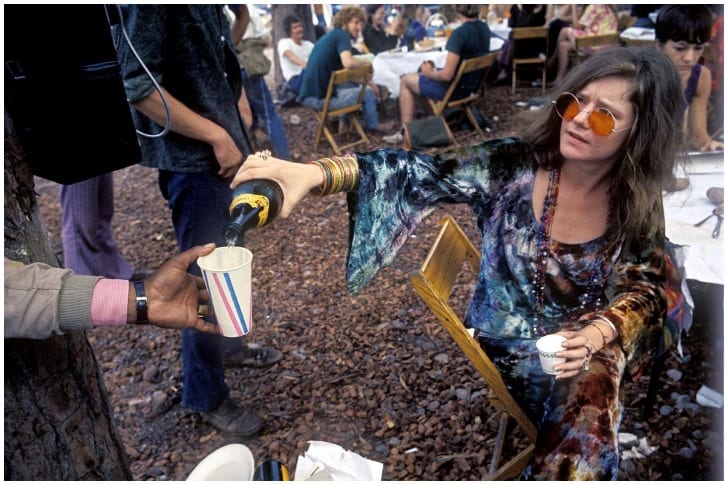
Janis Joplin's performance at Woodstock was nothing short of electrifying. Taking the stage late at night, Janis' raspy voice and passionate delivery captivated those who were awake to witness it. Her performance of "Piece of My Heart" became a heart-wrenching anthem of the festival, encapsulating the raw emotion and intensity that defined Woodstock.
Interestingly, Janice wasn't entirely satisfied with her performance, feeling she could have done better. But to the awestruck audience, her soulful rendition was a defining moment of the festival. The contradictory feelings between the artist and the audience capture the essence of the festival as a place where imperfections are embraced.
From Festival Grounds to Cultural Haven: Bethel's Evolution
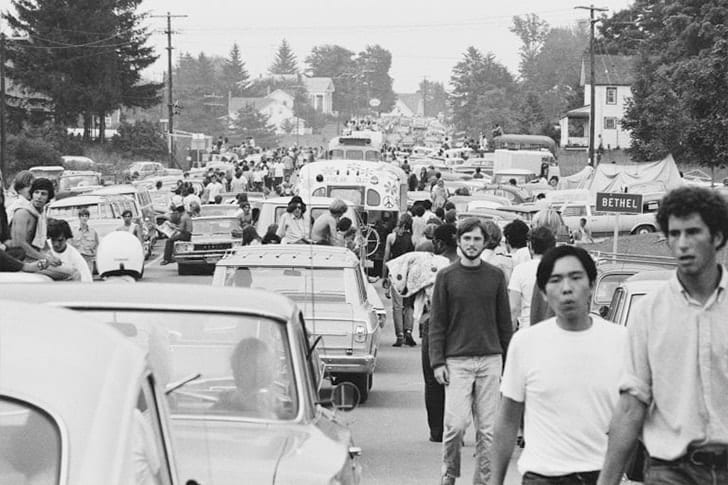
Woodstock's legacy transcends its geographical location, as the festival took place not in Woodstock but in the quiet village of Bethel, New York. The idyllic backdrop of this rural area became the canvas upon which the counterculture movement of the 1960s painted its vibrant expressions of peace and music.
Fast-forward to 1998, when billionaire Alan Gerry's vision transformed the historic site into the Bethel Woods Center for the Arts. This institution continues to resonate with the spirit of Woodstock. From the iconic performances of Jimi Hendrix and Carlos Santana to the tranquil fields of Bethel, the evolution from festival grounds to a cultural haven solidifies the enduring impact.
Whimsical Wonders
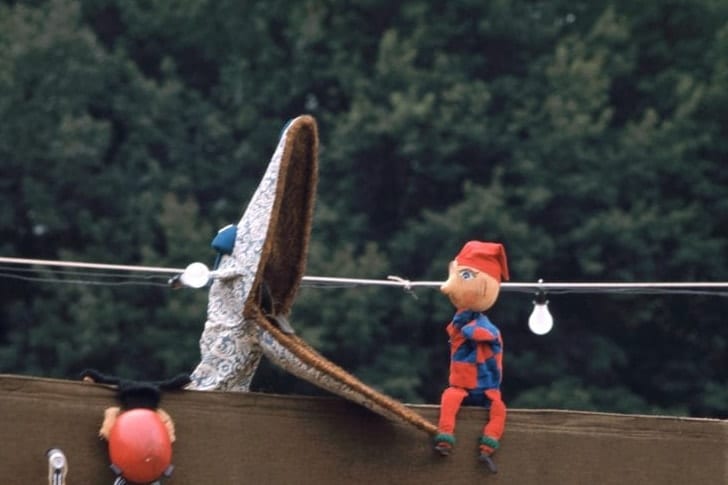
Amid the flood of artists, performers, and free spirits from diverse corners of the world, Bethel became a canvas for creativity at Woodstock. One endearing example is the impromptu puppet show, a charming alternative to the main stage that captivated the festival's youngest attendees.
With its handcrafted characters and enchanting storytelling, this makeshift performance brought smiles to the faces of many children present. In the midst of the festival's chaos, these moments of pure joy highlighted the spontaneous and communal nature of Woodstock. The puppet shows a tapestry woven by individual talents united in the pursuit of peace, love, and shared experiences.
Nurturing Care Amidst the Festive Frenzy
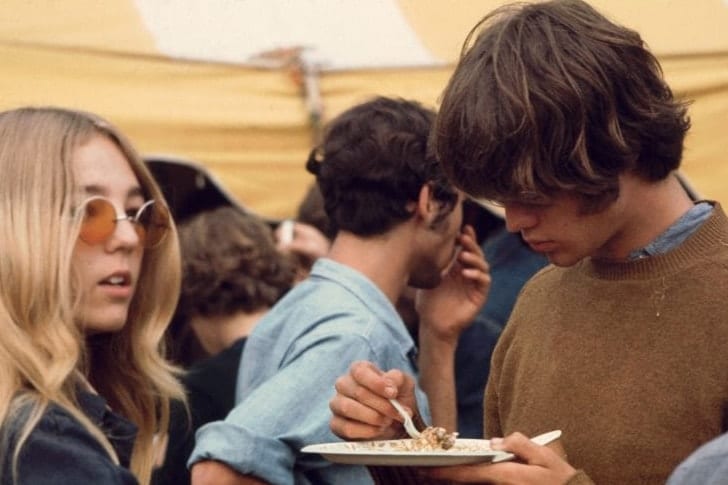
Woodstock's unique atmosphere extended beyond music and into the realm of social care. Despite the United States' reputation regarding social security, the festival's organizers ensured the well-being of young attendees by providing essential supplies for free. Amidst the backdrop of a drug-filled environment where cannabis consumption was rampant, this support became crucial.
Medical supplies, water, and food were distributed, acknowledging the vitality of self-care even in the throes of celebration. Teenagers, in their characteristic zeal, could easily forget their basic needs, especially in a lively gathering like Woodstock. The festival's organizers recognized this, weaving a safety net to prevent any health crises.
Woodstock's Medical Heroes
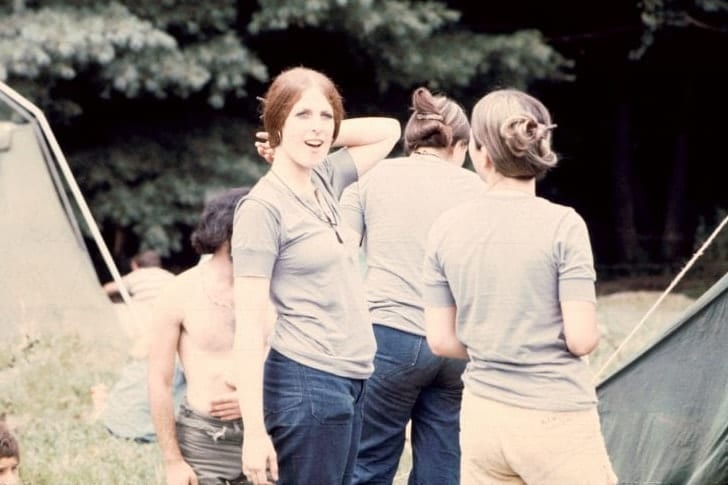
In the midst of Woodstock's euphoric celebrations, a dedicated team of around 45 doctors and volunteers emerged as unsung heroes. Their mission was to provide crucial medical aid to the festival's youthful attendees, grappling with dehydration, fatigue, and drug-related concerns.
These medical professionals offered a lifeline to those in need, offering physical assistance and a compassionate touch that echoed the event's core values. Their selfless dedication represented a beacon of responsibility amid the hedonistic atmosphere. Woodstock's legacy isn't just about music and counterculture—it's about the convergence of individuals, each contributing their unique strengths to create an unforgettable tapestry of care, unity, and shared humanity.
Woodstock's Media Storm: Shadows and Spotlight
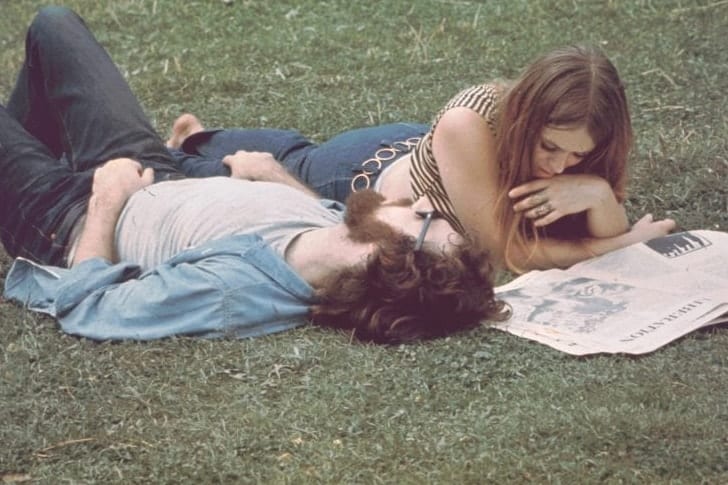
Woodstock, a celebration of counterculture and music, sparked a media frenzy that oscillated between fascination and criticism. While the festival embodied the spirit of a generation seeking peace and unity, it also faced its share of negative coverage. Media outlets, often skeptical of the unconventional gathering, highlighted challenges like traffic jams, food shortages, and the sheer scale of the event.
Yet, amidst the criticism, Woodstock's positive impact couldn't be ignored. The festival's message of love and harmony resonated with many, and its cultural significance left an indelible mark on history. The media frenzy, a tumultuous blend of shadows and spotlight, mirrored the era's social turbulence.
Dancing into Euphoria
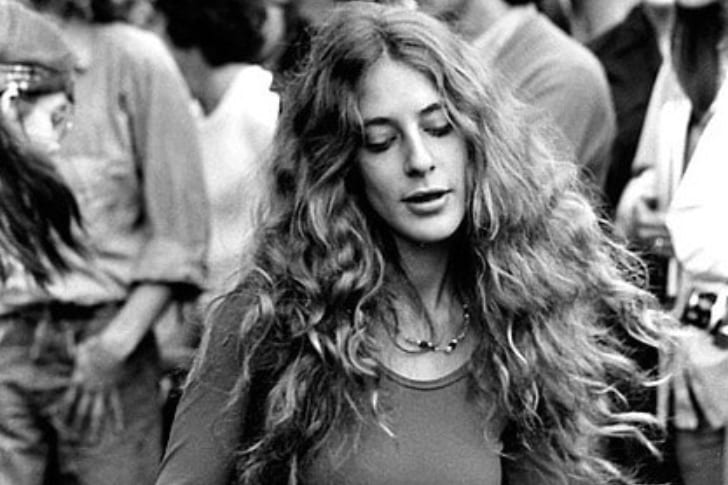
In the captivating embrace of music, worries fade, and spirits soar. Woodstock was a rare chance for revelers to shed inhibitions and seize the moment. The woman in this photograph epitomizes the festival's essence—lost in the music, eyes closed, and dancing with the abandon of a true free spirit.
Her infectious energy radiates as her hair dances in the wind, and her carefree moves seem to transcend choreography. Whether she had formal training or not is irrelevant; her pure joy and unbridled enthusiasm tell a story of liberation. She savored life's fleeting moments in a world often weighed down by troubles, letting the music guide her toward blissful abandon.
Abbie Hoffman's Disruptive Dance of Protest
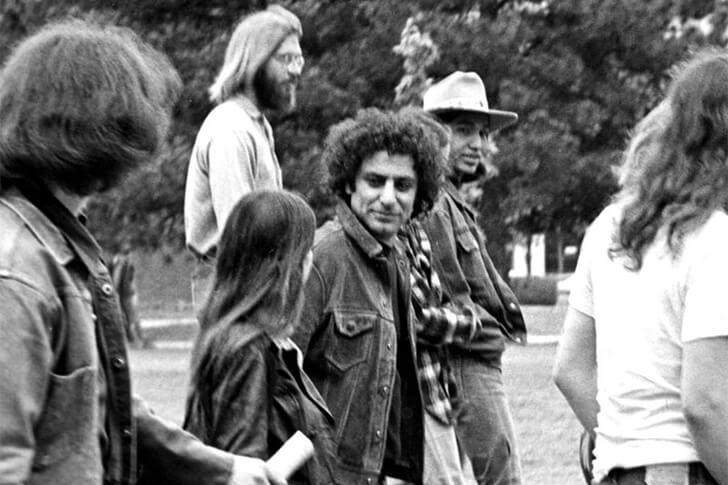
Woodstock wasn't just about music; it was a melting pot of counterculture and activism. A prominent activist, Abbie Hoffman, stirred the festival with his provocative behavior by adding zest to the atmosphere. In a memorable scene, he took the stage during a performance by The Who, grabbing a microphone and voicing his protest against the arrest of fellow activist John Sinclair.
Abbie's bold interruption sparked a mix of cheers and confusion from the crowd, showcasing the clash between the established order and the rebellious spirit of the era. This incident underscored Woodstock's significance beyond music as a social commentary and dissent platform.
